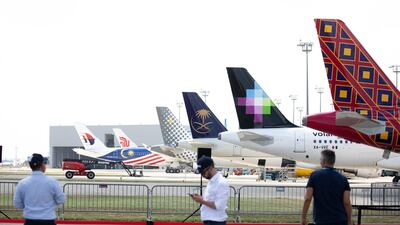Total global revenue passenger kilometres (RPKs) rose 5.3 per cent in February, compared to the same month a year earlier.
This was the slowest rate of growth in more than a year but still in line with long-term demand trends, the International Air Transport Association (Iata) said. Monthly capacity (available seat kilometres or ASKs) increased by 5.4 per cent, and load factor slipped 0.1 percentage point to 80.6 per cent, which is still high by historic standards, the association said.
“After January’s strong performance, we settled down a bit in February, in line with concerns about the broader economic outlook. Continuing trade tensions between the US and China, and unresolved uncertainty over Brexit are also weighing on the outlook for travel,” said Alexandre de Juniac, Iata’s director general and chief executive.
February international passenger demand rose 4.6 per cent compared to February 2018, which was a slowdown from 5.9 per cent growth in January. Capacity climbed 5.1 per ent, and load factor dropped 0.4 percentage point to 79.5 per cent.
European carriers' passenger demand increased by 7.6 per cent in February, compared to a year ago, unchanged from January. Europe’s continuing strong performance provides a paradox given Brexit concerns and signs of a softer economic outlook, Iata said. Capacity rose 8 per cent and load factor slid 0.3 percentage point to 82.3 per cent, which still was the highest among regions.
Asia-Pacific airlines’ February traffic rose 4.2 per cent compared to the year-ago period, a substantial slowdown from the 7.2 per cent increase recorded in January. Capacity increased 4.7 per cent and load factor dipped 0.3 percentage point to 81 per cent.
Middle East carriers recorded a 0.8 per cent traffic decline in February compared to a year ago. Capacity rose 2.9 per cent and load factor fell 2.7 percentage points to 72.6 per cent.
North American airlines’ traffic climbed 4.2 per cent in February, a decline from 5.4 per cent growth in January, while Latin American airlines saw traffic rise 4.3 per cent compared from 5.4 per cent annual growth in January.
African airlines experienced a 2.5 per cent rise in traffic for the month compared to the year-ago period, down from 5.1 per cent growth in January.
Domestic travel demand rose 6.4 per cent in February compared to February 2018, down from 7.4 per cent annual growth in January. All markets except Australia reported increases in traffic.

